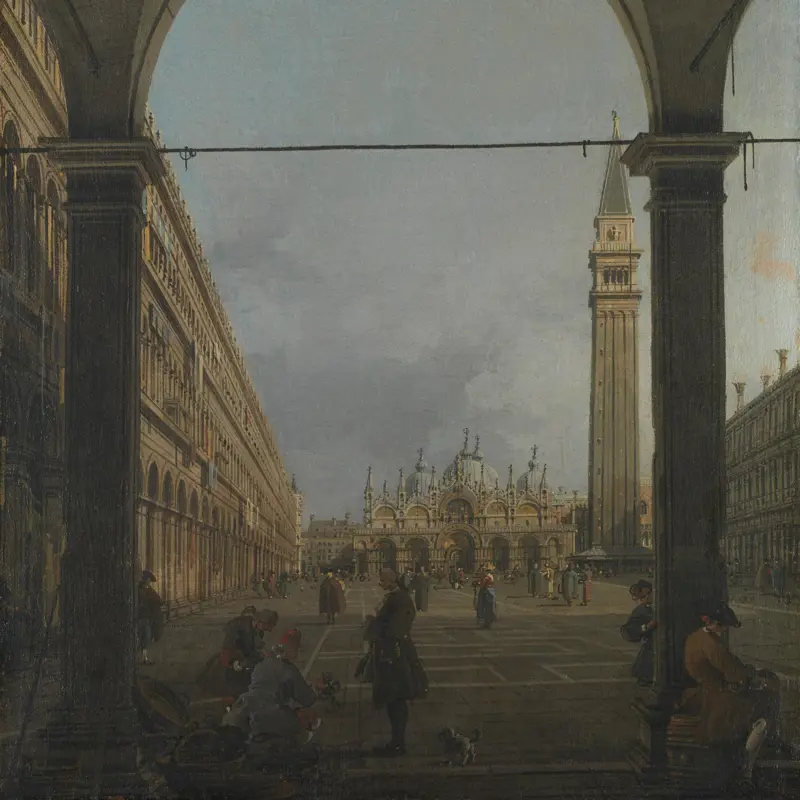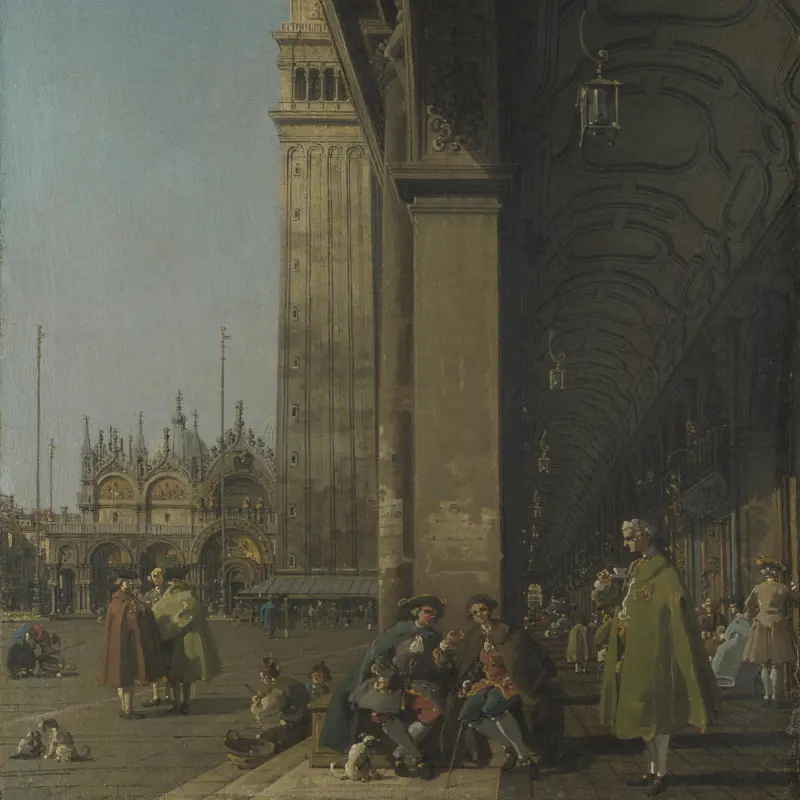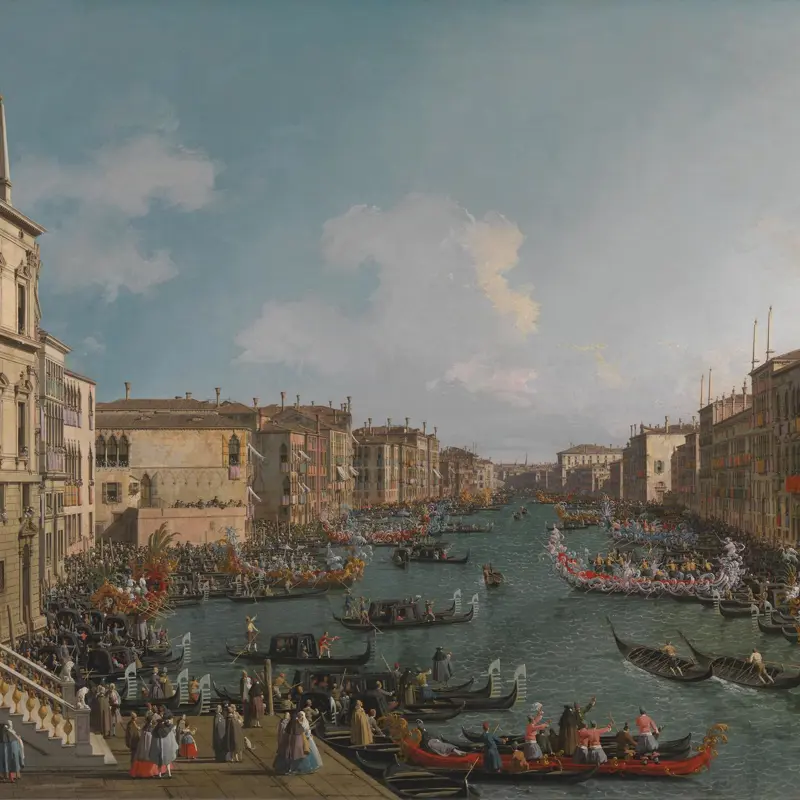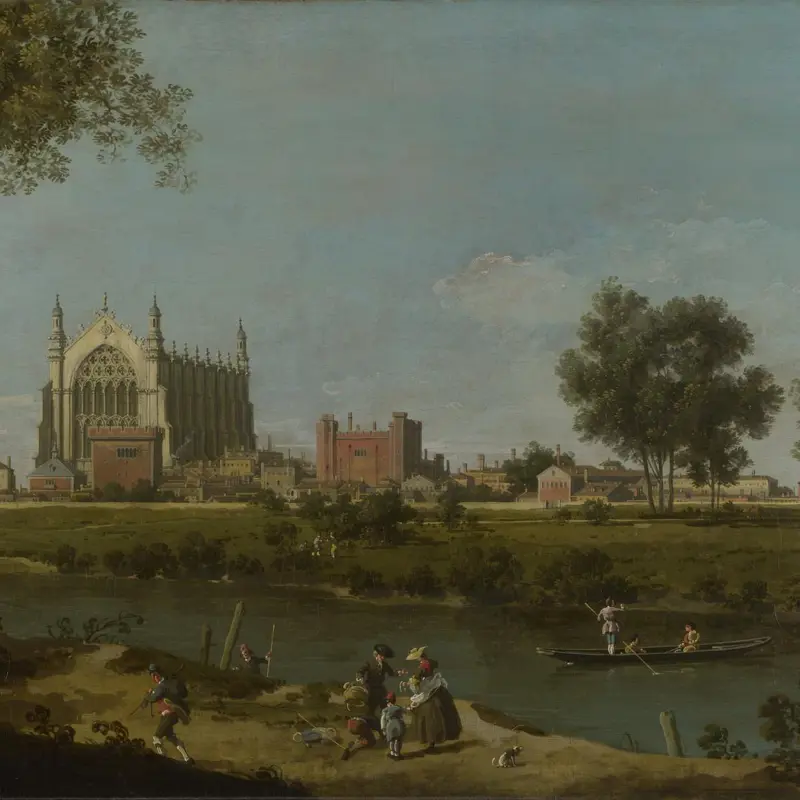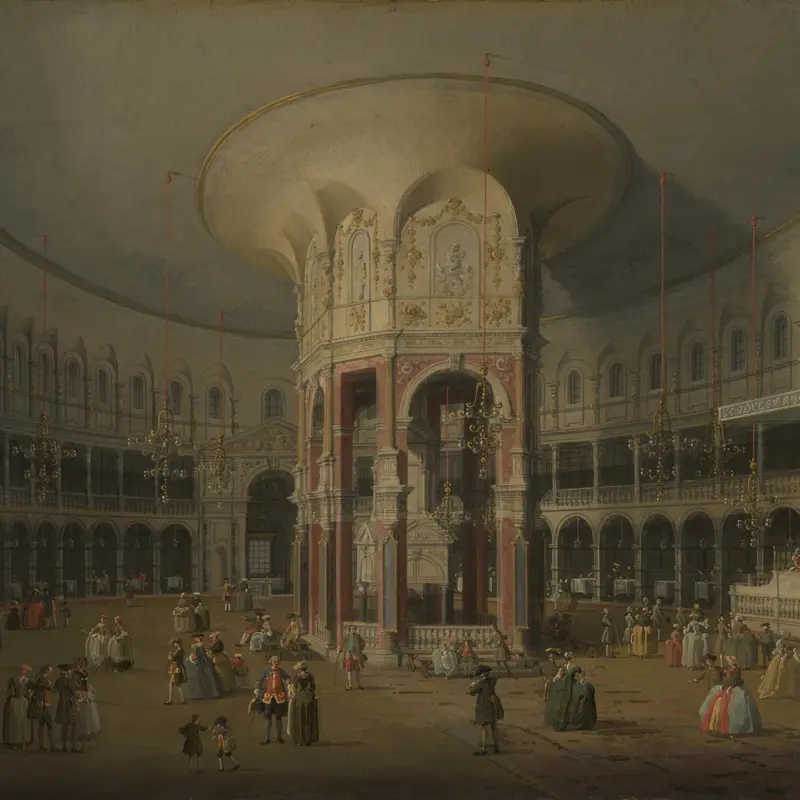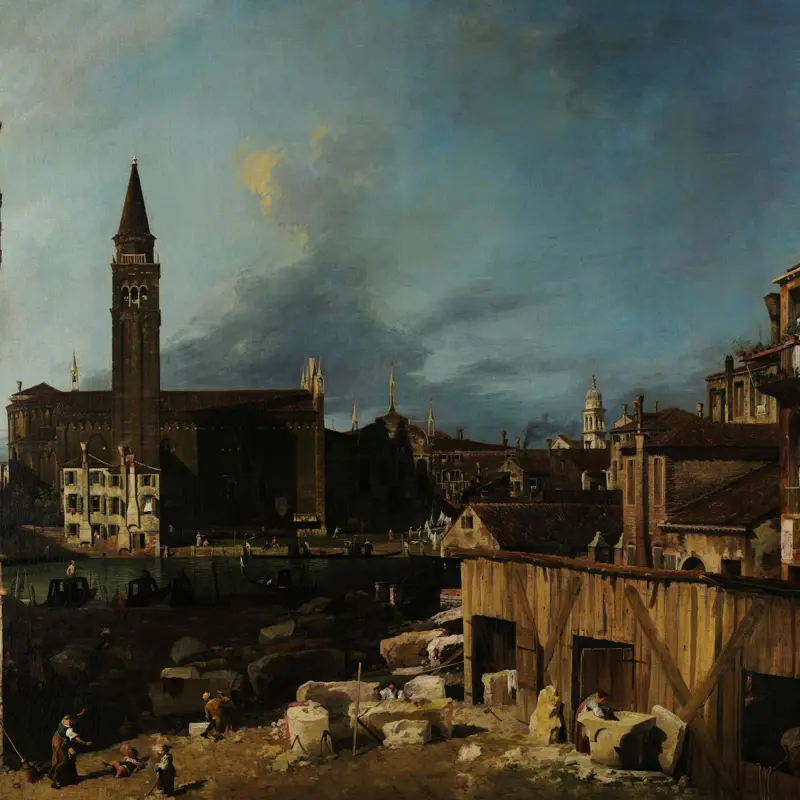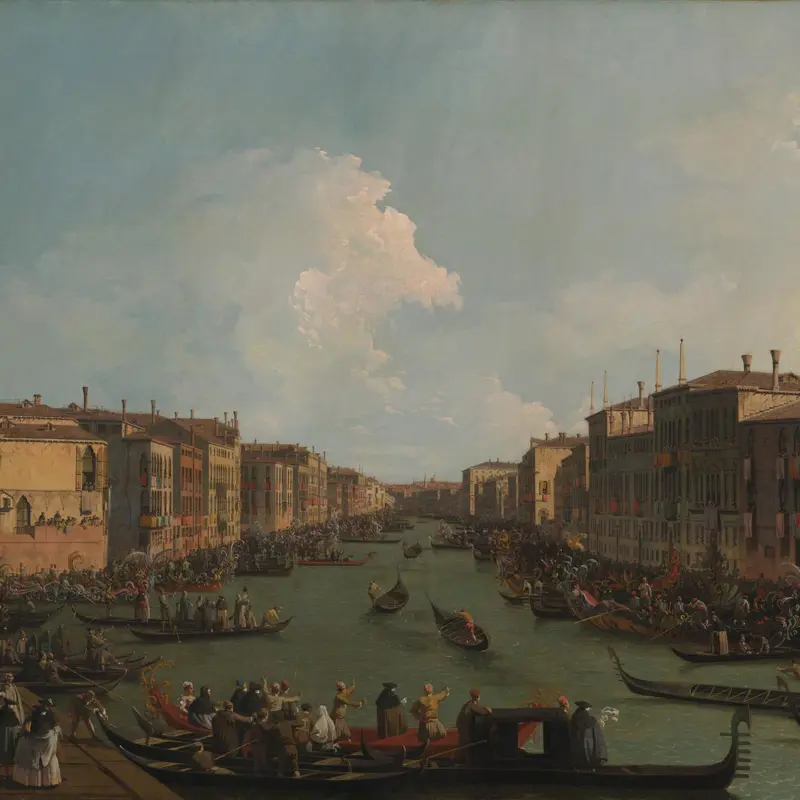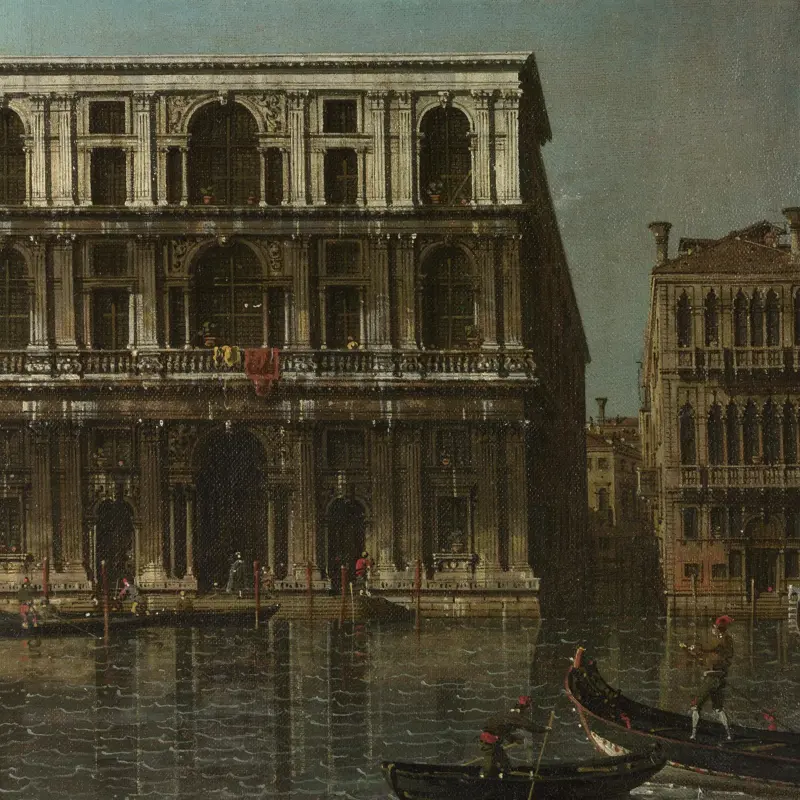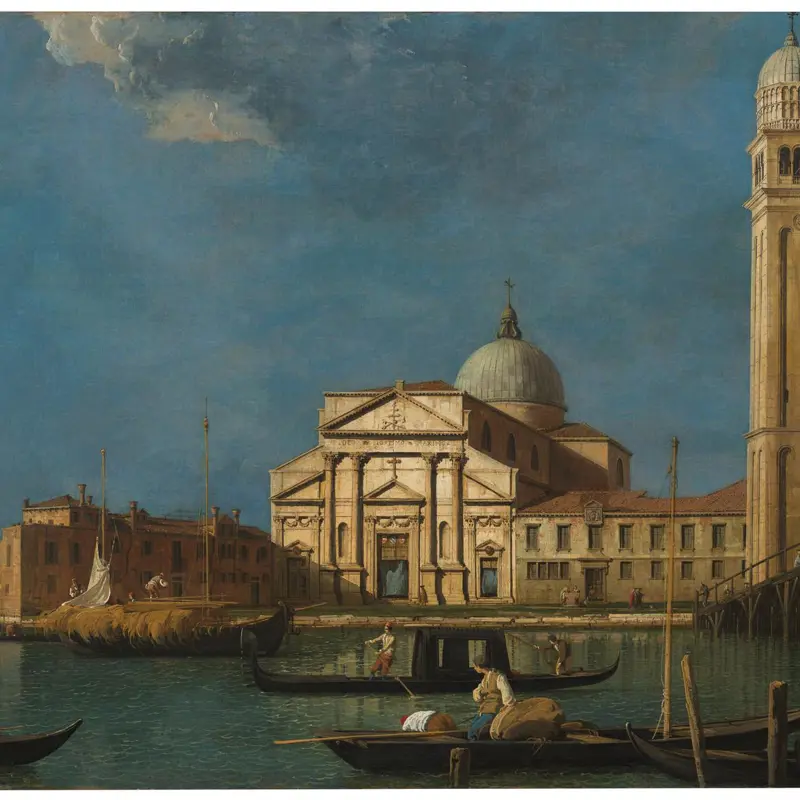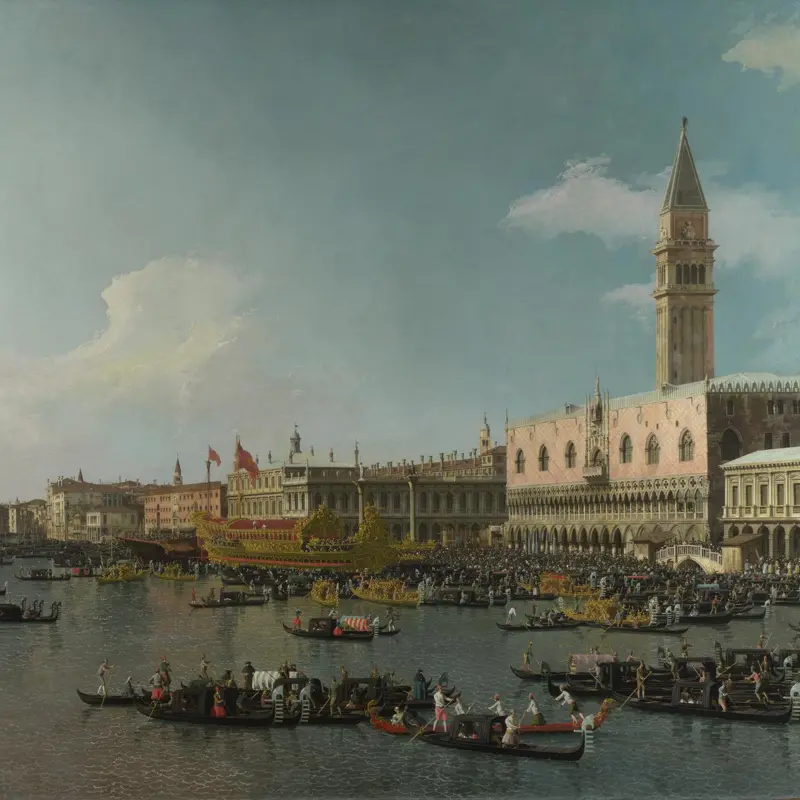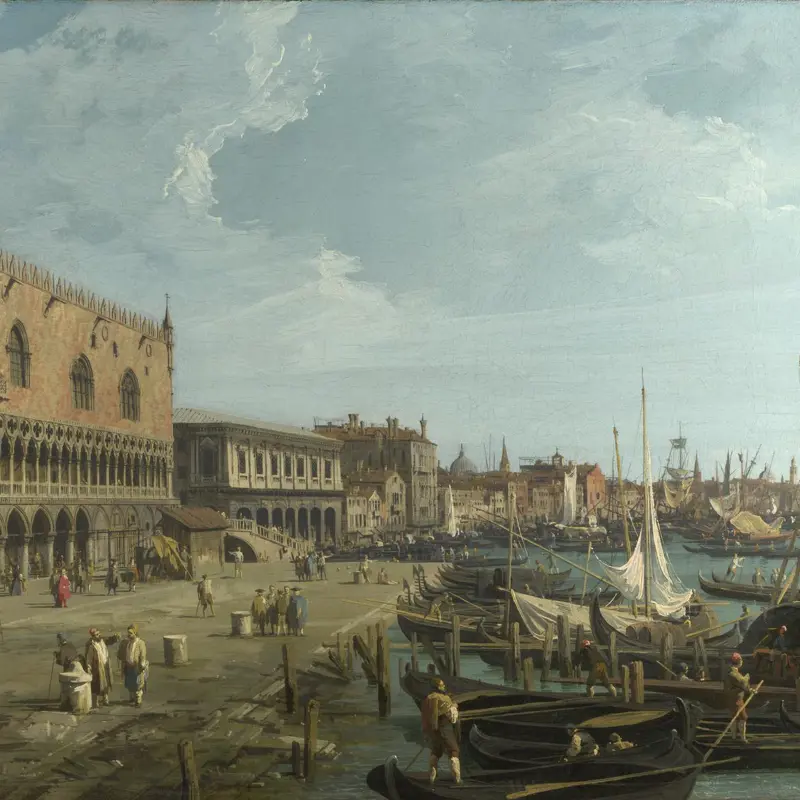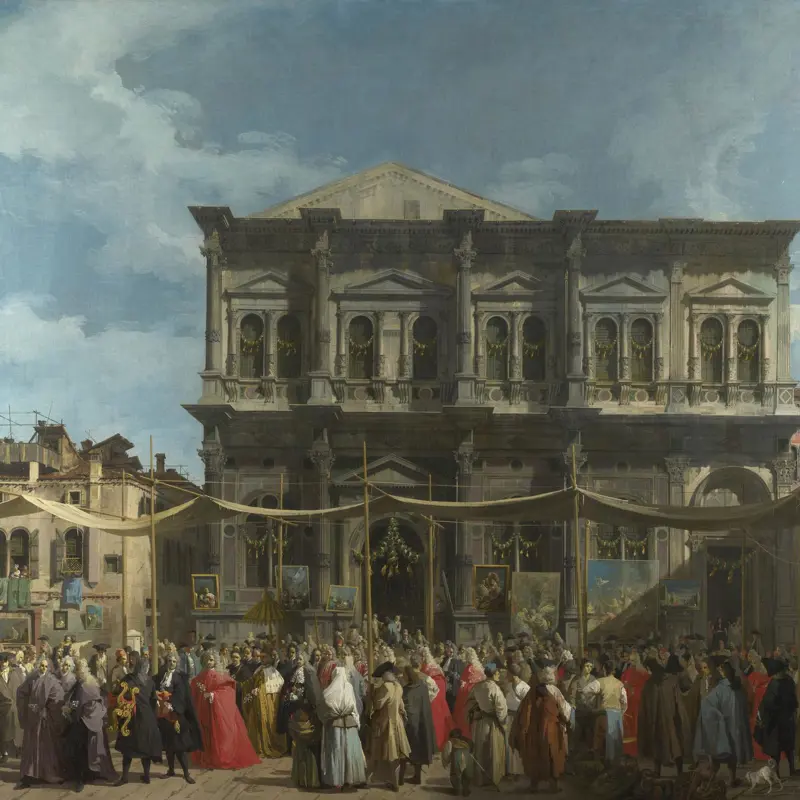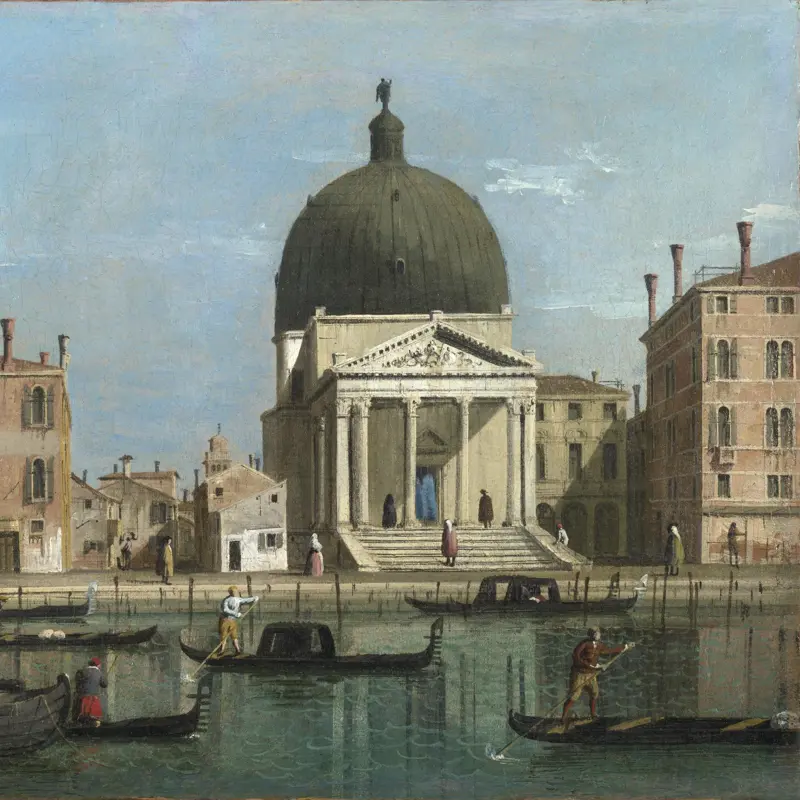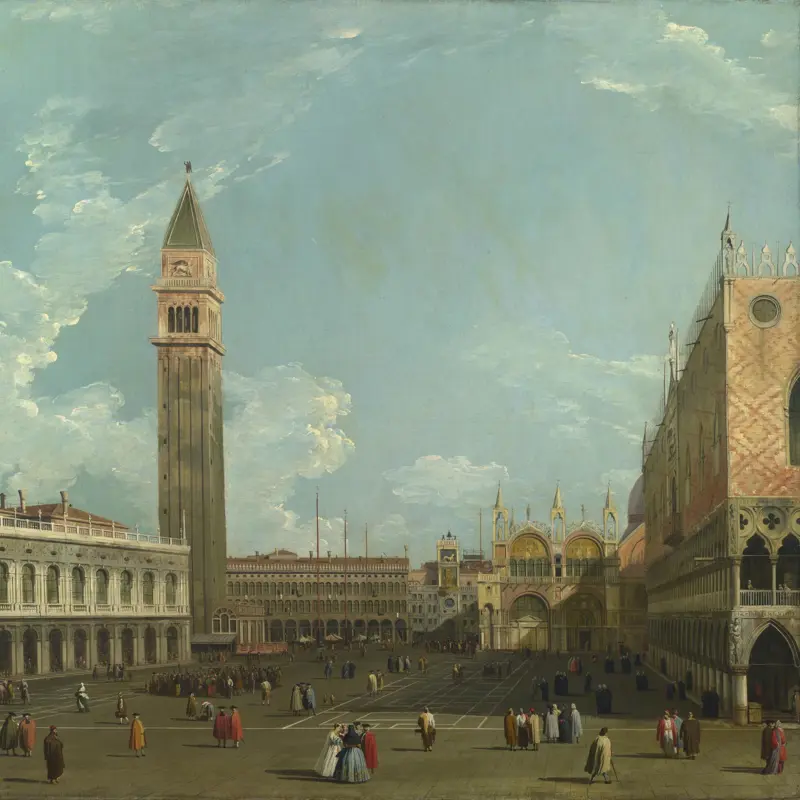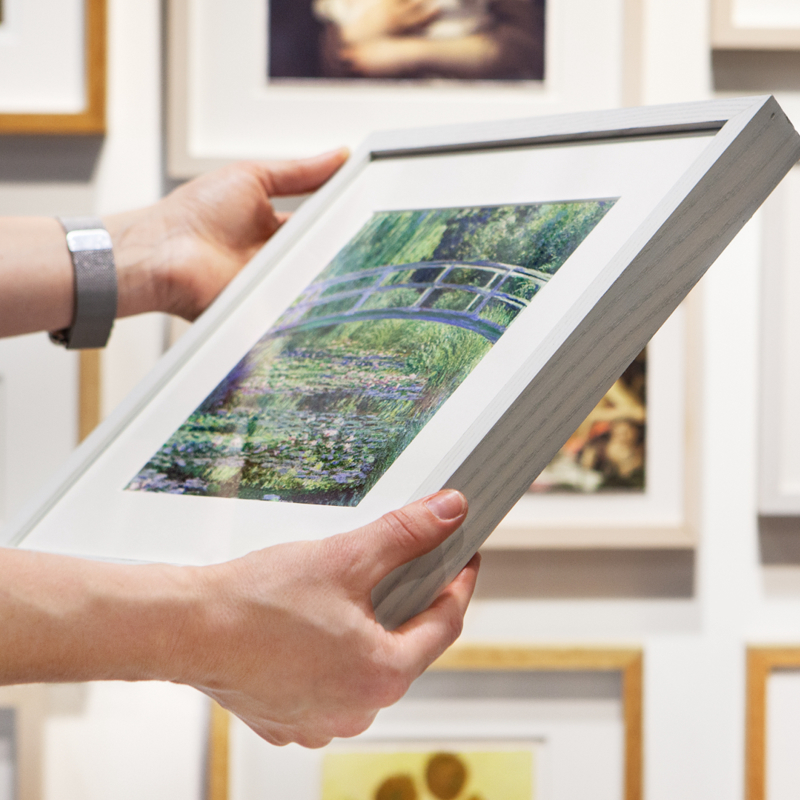Canaletto, 'Venice: Piazza San Marco', about 1758
About the work
Overview
This small picture shows the great Piazza San Marco – the most famous square in Venice. We look through an archway, stood in the shadows just behind a group of figures; it is as if we are walking past them along the colonnade. A vendor surrounded by baskets shows his wares to two gentlemen. A man perched on a barrel turns his head towards us, while another peeps out from behind a pillar.
The archway focuses attention on the buildings beyond: the Basilica di San Marco, the city’s most sacred church, and to the right, its campanile (bell tower). The paving stones and buildings that line the square recede at a sharp angle, which Canaletto exaggerated, leading our eye deeper into the scene. Dots and swirls of paint pick out people in the distance, creating the impression that we are looking on from afar.
Key facts
Details
- Full title
- Venice: Piazza San Marco
- Artist
- Canaletto
- Artist dates
- 1697 - 1768
- Part of the series
- Two Views of Piazza San Marco
- Date made
- About 1758
- Medium and support
- Oil on canvas
- Dimensions
- 46.4 × 37.8 cm
- Acquisition credit
- Salting Bequest, 1910
- Inventory number
- NG2515
- Location
- Room 33
- Collection
- Main Collection
- Previous owners
- Frame
- 18th-century Roman Frame
Provenance
Additional information
Text extracted from the ‘Provenance’ section of the catalogue entry in Michael Levey, ‘National Gallery Catalogues: The Seventeenth and Eighteenth Century Italian Schools’, London 1986; for further information, see the full catalogue entry.
Exhibition history
-
2008Canaletto: Venezia e i Suoi SplendoriCasa dei Carraresi23 October 2008 - 5 April 2009
-
2010Venice: Canaletto and His RivalsThe National Gallery (London)13 October 2010 - 16 January 2011National Gallery of Art (Washington DC)20 February 2011 - 30 May 2011
-
2012Canaletto - Guardi: The two masters of VeniceMusée Jacquemart-André14 September 2012 - 14 January 2013
-
2018Canaletto 1697 - 1768Museo di Roma - Palazzo Braschi10 April 2018 - 19 August 2018
Bibliography
-
1910C. Phillips, 'The Salting Collection, II: The Italian Pictures', The Burlington Magazine, XVII/85, 1910, pp. 9-22
-
1931A. Morassi, 'La raccolta Treccani', Dedalo, XI/4, 1931, pp. 1012-37
-
1947P. Hendy, An Exhibition of Cleaned Pictures of 1947: (1936-1947), London 1947
-
1954V. Moschini, Canaletto. Testo di Vittorio Moschini, Milan 1954
-
1956Levey, Michael, National Gallery Catalogues: The Eighteenth Century Italian Schools, London 1956
-
1971M. Levey, The Seventeenth and Eighteenth Century Italian Schools, London 1971
-
1975L. Puppi, Tout l'oeuvre peint de Canaletto, Paris 1975
-
1976W.G. Constable and J.G. Links, Canaletto: Giovanni Antonio Canal, 1697-1768, revised edn, Oxford 1976
-
1985A. Corboz, Canaletto: Una Venezia immaginaria, Milan 1985
-
1986Levey, Michael, National Gallery Catalogues: The Seventeenth and Eighteenth Century Italian Schools, London 1986
-
1989W.G. Constable and J.G. Links, Canaletto: Giovanni Antonio Canal, 1697-1768, 3rd edn, Oxford 1989
-
1989V. Lleó Cañal, 'The Art Collection of the Ninth Duke of Medinaceli', The Burlington Magazine, CXXXI/1031, 1989, pp. 108-16
-
1994J.G. Links, Canaletto, revised edn, London 1994
-
1994F. Zanzotto, 'Collezionismo veneziano del Settecento', Venezia Arti, 8, 1994, pp. 57-66
-
1998D. Bomford and G. Finaldi, Venice through Canaletto's Eyes (exh. cat. The National Gallery, 15 July - 11 October 1998; York City Art Gallery, 24 October 1998 - 3 January 1999), London 1998
-
2001
C. Baker and T. Henry, The National Gallery: Complete Illustrated Catalogue, London 2001
About this record
If you know more about this work or have spotted an error, please contact us. Please note that exhibition histories are listed from 2009 onwards. Bibliographies may not be complete; more comprehensive information is available in the National Gallery Library.
Images
About the series: Two Views of Piazza San Marco
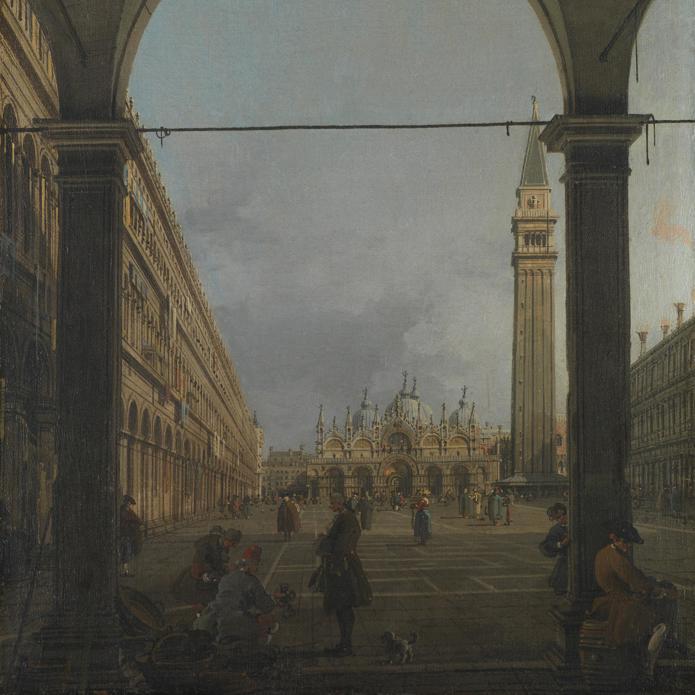
Overview
This captivating pair of view paintings – Piazza San Marco and Piazza San Marco and the Colonnade of the Procuratie – depict the Piazza San Marco, home to some of Venice’s most famous landmarks.
Canaletto painted these works during the late 1750s, shortly after his return to Venice from England. Because of their small scale and upright format they are somewhat unusual when compared to the artist’s earlier panoramic views, but his choice of composition was still innovative. In most of his paintings, we look across the Grand Canal or the lagoon that surrounds Venice. Here, Canaletto has experimented with viewpoints taken from within an architectural structure, for example an archway within a colonnade.
His mature phase prompted certain stylistic changes: he moved towards sombre colouring and darker tonality, and he tended to paint small canvases. This appealed to Venetian collectors and foreign tourists – smaller paintings would have been more affordable and easier to transport.

